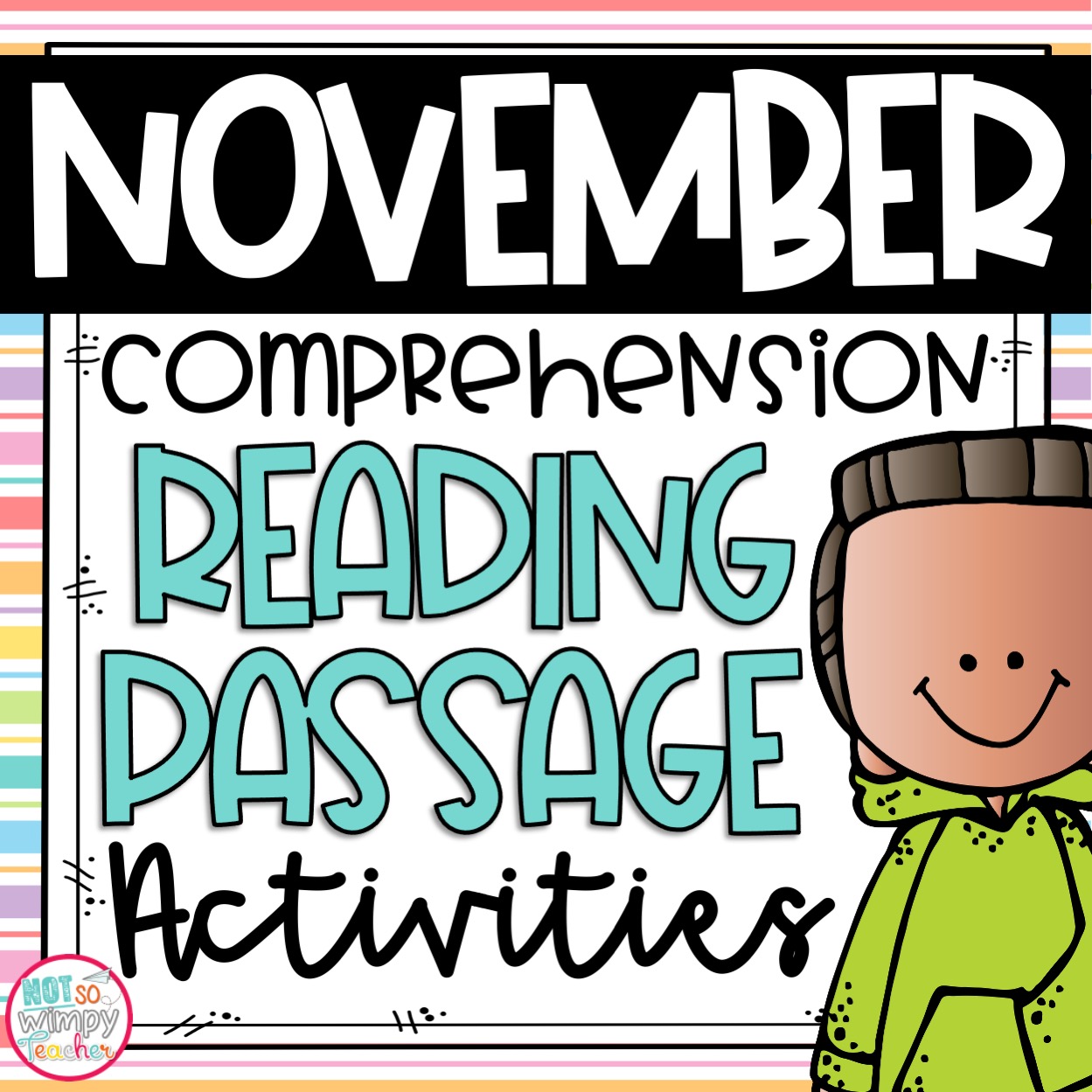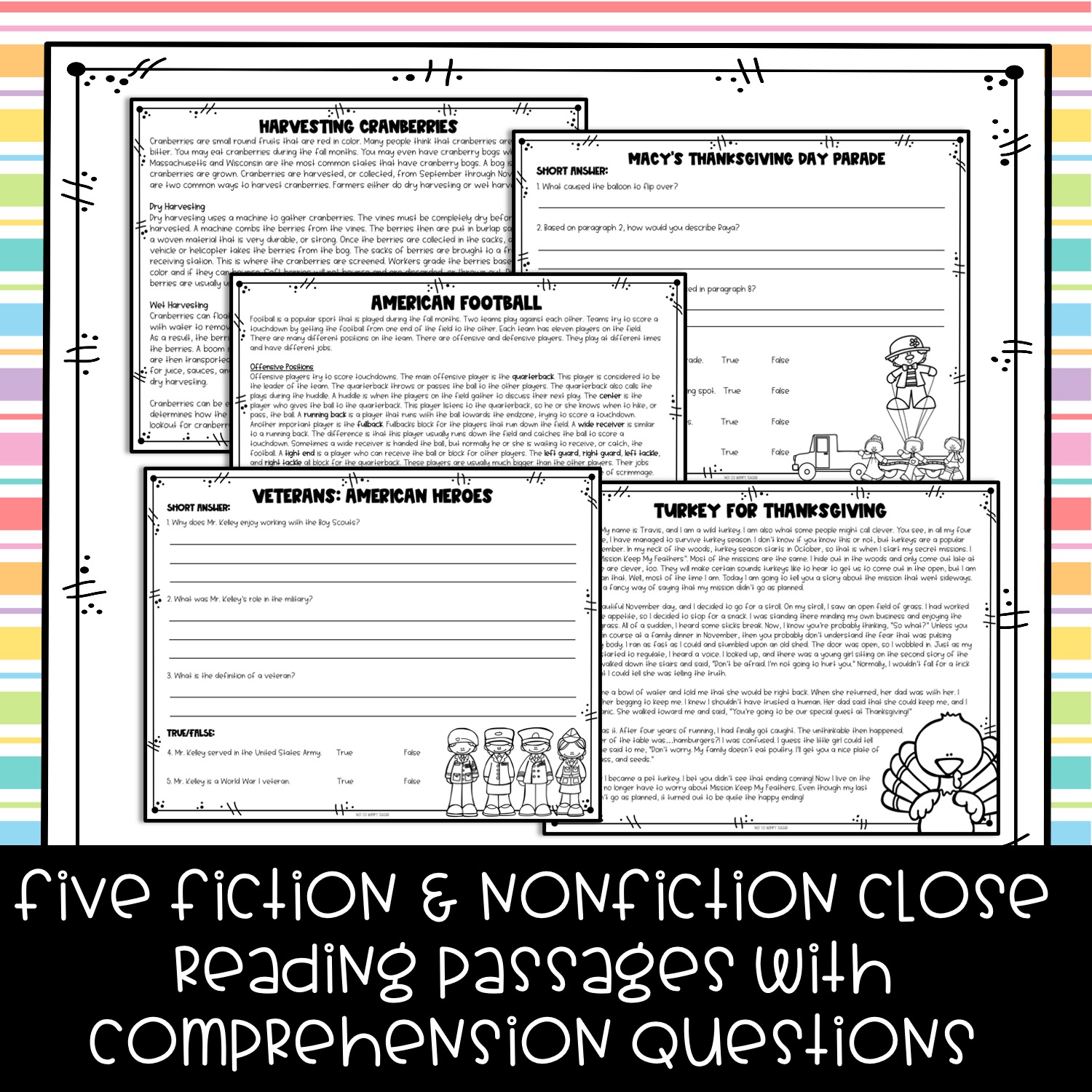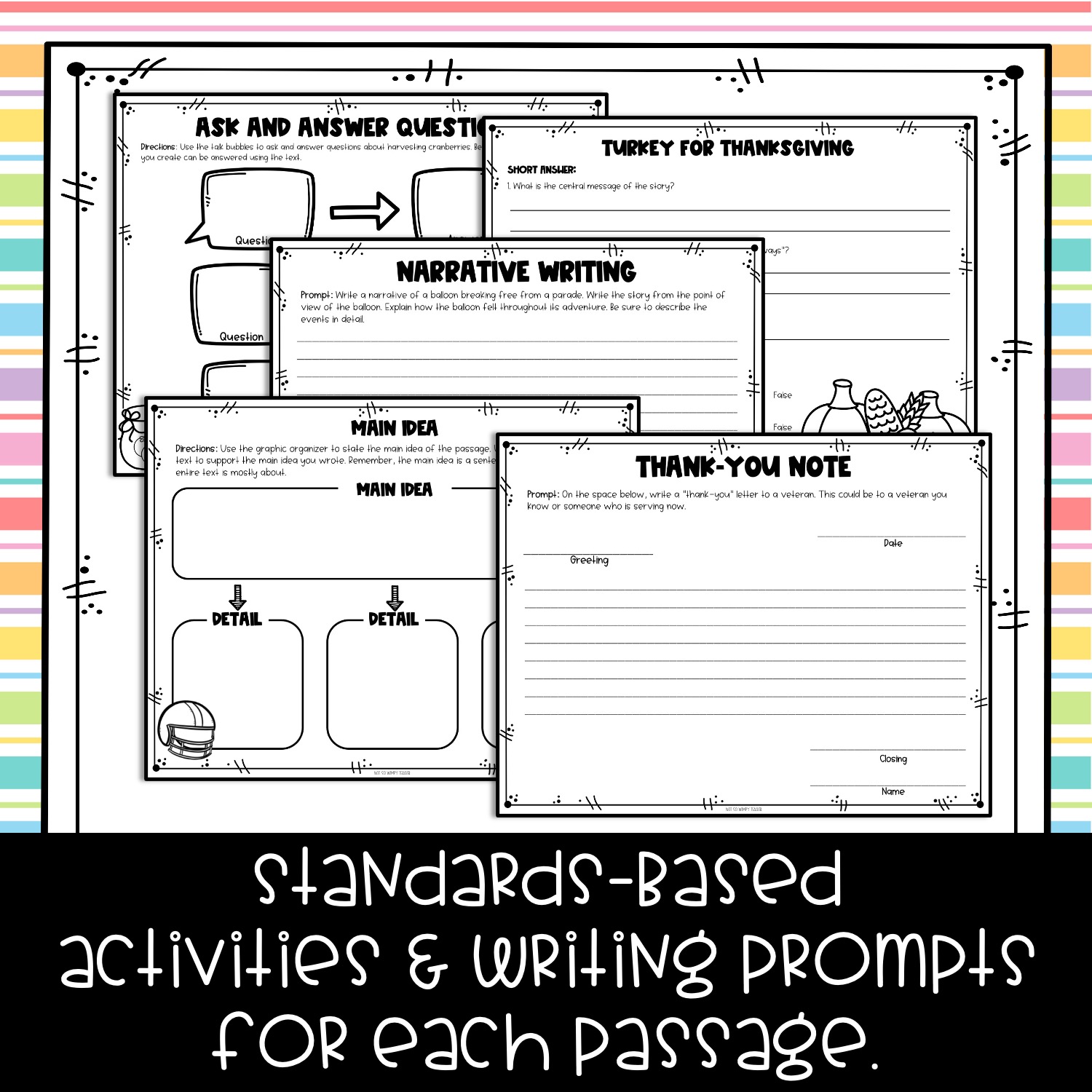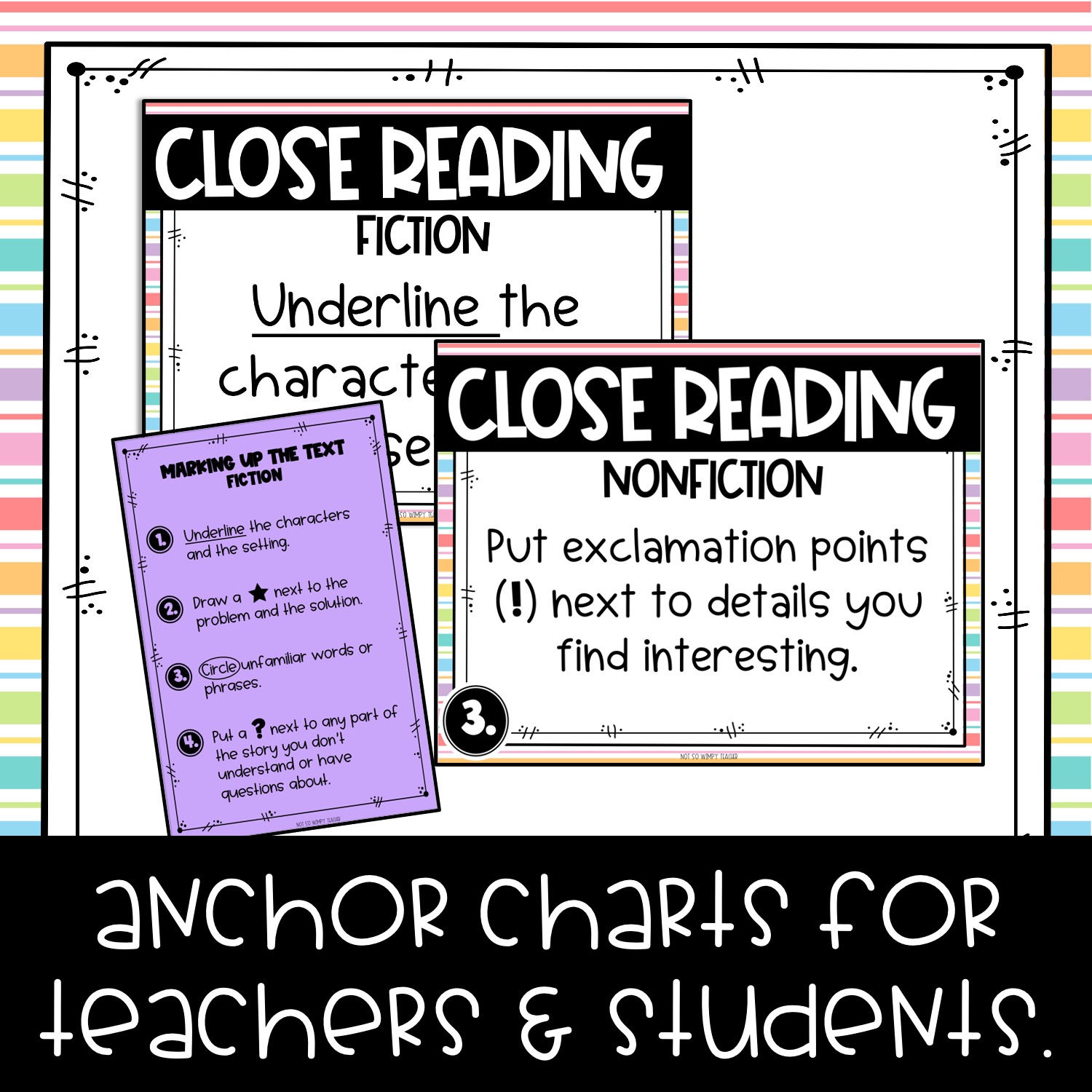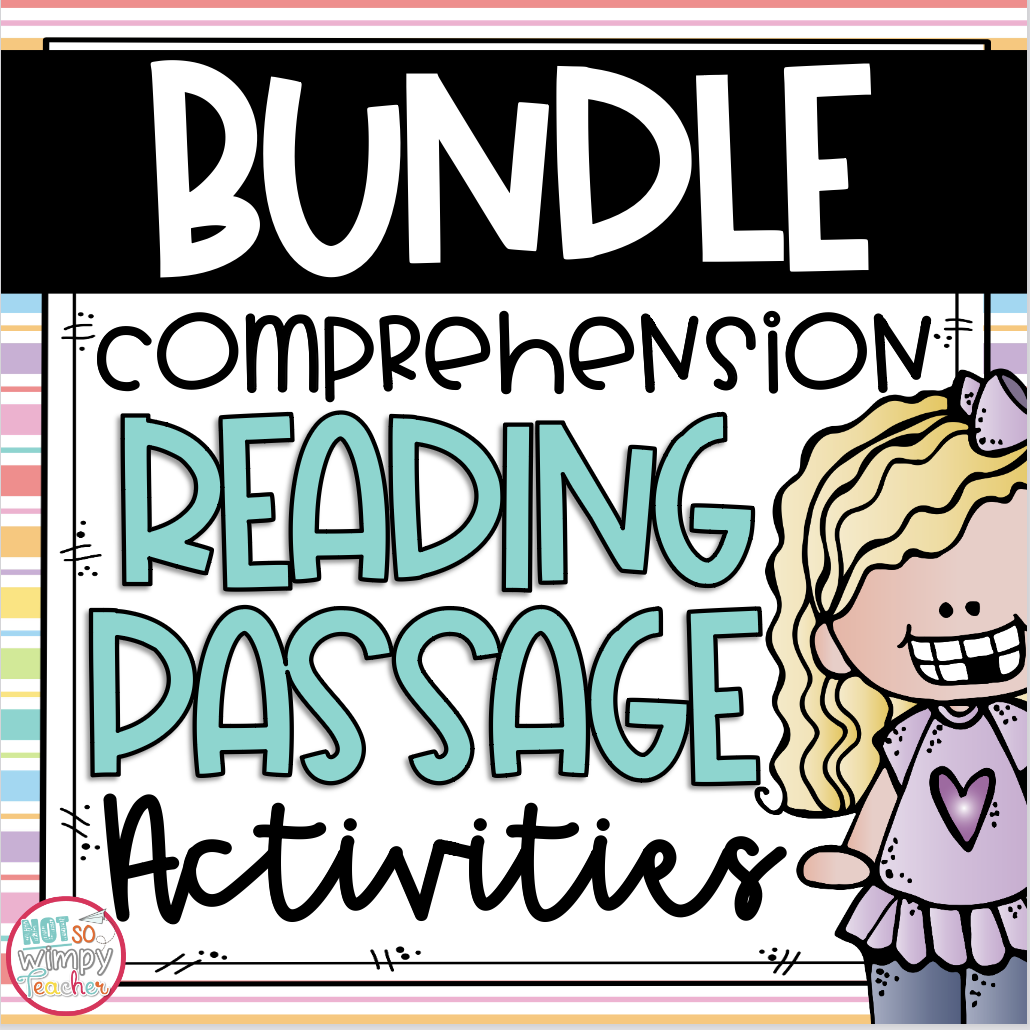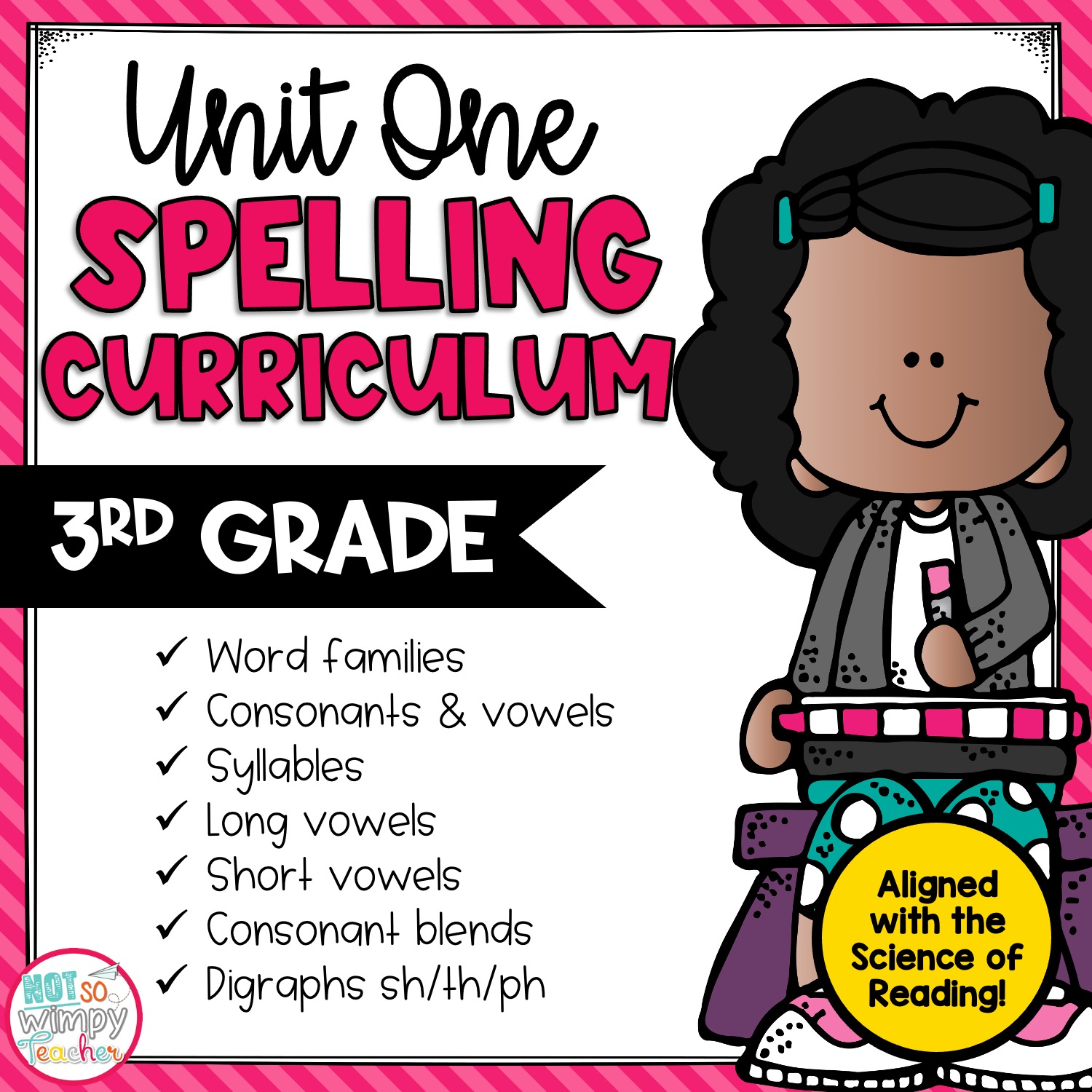These monthly seasonal reading passages provide rigorous, standards-based practice of close reading skills. Each month includes 5 short, student-friendly reading passages that are a mix of fiction and nonfiction.
Reading Comprehension Close Read Passages for November
Save MORE with Lesson GenieMore about this resource
So many standards, so little time …
Read for understanding and fluency. Identify the main idea. Make reasonable predictions. Identify character traits. Summarize passages. Compare and contrast. Identify cause and effect. I could go on and on . . .
The list of state-tested reading standards is longer than the drive-thru line at Starbucks on Monday morning.
And it’s not just long. It’s rigorous. Making sure that each of your students understands all these complicated reading skills in time for standardized testing is one venti order.
But we’ve got a treat for you. And it’s even better than finding out that the car in front of you paid for your venti vanilla sweet cream cold brew with extra foam. Which is saying a lot, right?
It’s our seasonal reading passages. These monthly reading passages provide rigorous, standards-based practice of close reading skills. Each month includes 5 short, student-friendly reading passages that are a mix of fiction and nonfiction.
What’s Included:
- 5 seasonal-based reading passages (3 informational passages & 2 fiction passages) for students to practice close reading skills like underlining, circling, adding symbols and notes
- Comprehension questions for each passage that require students to think deeply about the reading and find text evidence to support their answers
- Standards-based reading activities (1 for each passage) for additional practice that keeps kids engaged
- 5 reading response writing activities (1 for each passage) that help kids develop higher-order thinking skills and use text-evidence
- 12 teacher anchor charts – simply project onto whiteboard or print and display in the classroom
- Printable student anchor charts (2 versions) for students to reference during close reading
- An “At a Glance” calendar
- Answer keys
- Detailed teacher directions
Passages Included:
Harvesting Cranberries- nonfiction
Macy’s Thanksgiving Day Parade- fiction
Turkey for Thanksgiving- fiction
American Football- nonfiction
Veterans: American Heroes- realistic fiction (Interview- nonfiction)
Reading Skills Covered:
- Ask and Answer Questions
- Vocabulary
- Character Changes
- Main Idea
- Biography
Writing Skills Covered:
- Explanatory
- Opinion
- Narrative
- Thank-You/Friendly Letter
How to Use:
Follow the “At a Glance” calendar plan for implementing these no-prep close reading activities in the classroom:
Day 1: Close read and mark up the text
Day 2: Comprehension questions
Day 3: Standards-based activity
Day 4: Text-dependent writing activity
You can use these seasonal reading passages in a number of ways:
Whole group
- Use these passages during whole group instruction. Simply project a passage on the whiteboard. You can model how to do a close read and think aloud as you complete the reading. You can also use the strategies to mark up the passage.
- Use class discussion to answer the questions and model how to write good answers to comprehension questions using evidence from the text.
- These short reading passages are perfect for whole group review and test prep.
Small Group
- Use these passages in small groups. These passages are the perfect tool for intervention. Select a passage that reviews a skill your small group is struggling with (don’t be afraid to mix up your groups and pull together kids who are all struggling with the same skill). Use small group instruction to reteach difficult skills and provide additional support.
- Use these passages for enrichment. Select a passage that reviews a more advanced skill and use it with more advanced readers. You can work on the skill in a small group or allow students to work independently or with a partner.
Independent Work:
- Assign individual passages to be completed independently or with a partner.
- Place passages in reading centers.
- Complete the writing activities during writing time
- Use passages for morning work or fast finishers.
- Assign passages for homework.
Differentiation:
The passages are also easy to differentiate.
- Assign different passages to different students based on individual mastery of skills.
- Group students together based on skill and use them at the teacher table to provide extra support.
- Let advanced students work independently for enrichment.
- Two versions of student anchor charts (with and without symbols) are included for use with different grade levels.
These close reading passages are intended to be used over a month period, but you may adapt the activities to meet your needs.
Why You’ll Love It
- No prep practice of tough close reading skills
- “At A Glance” calendar makes planning easy
- Students LOVE the readings and activities
- Teacher anchor charts to provide academic support especially for your visual
learners - Student anchor charts that they can reference when marking up the text and
understanding close reading. - Individual writing activities that help deepen students’ response to reading skills.
*********
Looking for other Seasonal Passages:
January Seasonal Reading Passages and Activities
February Seasonal Reading Passages and Activities
March Seasonal Reading Passages and Activities
April Seasonal Reading Passages and Activities
May Seasonal Reading Passages and Activities
June Seasonal Reading Passages and Activities
July Seasonal Reading Passages and Activities
August Seasonal Reading Passages and Activities
September Seasonal Reading Passages and Activities
